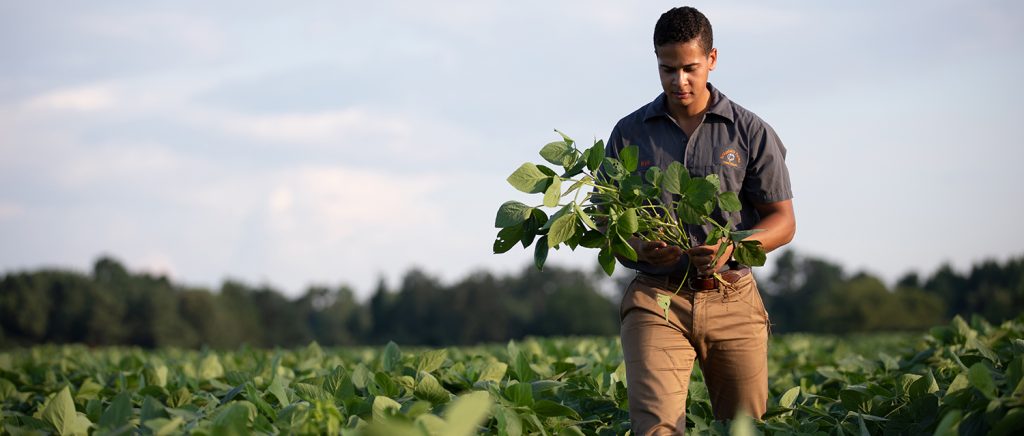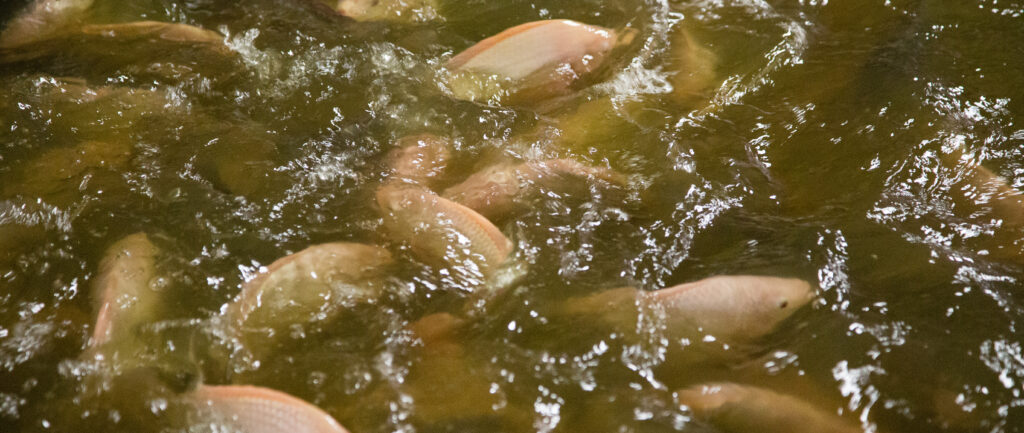Little-known MnDOT statute has soybean growers raising questions
Lincoln County soybean grower Bob Worth was hosting his weekly radio show, “For What’s It Worth,” in late November when a caller asked him for his reaction to the Minnesota Department of Transportation’s (MnDOT) recent announcement requiring a permit for mowing and baling in highway right-of-way.
Worth was caught off-guard by the question, and didn’t have an answer. Like many rural Minnesota landowners, he was unaware a statute even existed.
“I never knew about it,” says Worth, who will be sworn-as mayor of Lake Benton, Minn., in January. “Nobody did. I’ve spent about the last three weeks researching it, and it just doesn’t make any sense to me.”
Worth quickly relayed his concerns to Sen. Bill Weber (R), District 22 and chairman of the Senate Committee on Agriculture. Weber shares Worth’ reservations and says he’s open to pursuing any possible legislative actions that can be enacted via the agricultural or transportation committees.

“At the end of the day, there needs to be level of practicality,” Senator Weber says. “But I wonder if MnDOT is going to have the manpower if farmers aren’t doing the mowing? I doubt it.”
The mowing-bailing statue has been in place since the 1980s but enforcement had been relatively lax.
“It’s different than what we were doing last year,” says Jed Falgren, MnDOT’s assistant district 7 engineer-maintenance. “There has been a lot of mowing going on over the years without a permit, and we haven’t made it a point of emphasis. But we don’t build the statute—that’s for lawmakers to do.”
MnDOT says maintaining roadside right-of-way helps drain excess water away from ditches,provides locations for public utilities and a habitat for pollinators, nesting birds and other small wildlife.
“This is a new permit, but it’s not a new requirement or responsibility,” Falgren says. “That’s the way it sits right now.
It’s really not a new regulation, and that’s a big distinction. The bottom line is, when someone is in our right-of-way, we want to make sure they’ve got the best chance to be safe.”
A study by MnDOT’s Land Management favored a clearer definition in how the department, which is required to oversee the state’s 12,000 miles of roadway, was managing the mowing of its right-of-way. The new standard requires landowners to file a permit to mow right-of-way only during the month of August. From Aug. 31 through July 31, the right-of-way can only be mowed for safety reasons.
“Some of our permits can be quite long, but this is streamlined,” Falgren says. “We’re simply providing a permit that’s a little more clean and simple.”
Worth says he’s frustrated by what he sees as the statute’s inconsistencies.
“What I don’t understand is, if this statute has been in place for 30 years, why now are they deciding to change everything?” Worth says. “That’s what I want to stress.”
Connecting the MnDOTs
Worth cited three reasons why farmers prefer taking care of roadside ditches and lawns. They want to use the hay to feed livestock; mowing helps control noxious weeds and prevents the weeds from going to seed; thirdly, farmers take pride in showing off their field.

“It’s not going to be very pretty when you have weeds and grass as tall as soybeans,” Worth says. “I just don’t think farmers are going to be very happy about this, and landlords won’t be either.”
Falgren emphasizes he appreciates farmers’ concerns after meeting with members of the ag community, and that MnDOT understands the benefit in farmers mowing and haying the right-of-way. Ultimately, Falgren says, the new standard is reasonable and logical, and not intended to place restrictions on landowners.
“We’re more worried about travelers today than we’ve ever been,” he says, “whether it’s texting and driving, or motorists entering work zones when they shouldn’t. This permit is not done with the intent of providing additional control or to be a greater burden, but only to provide a safe work area and balance the respective needs around the state.”
As part of the mowing-haying permit, landowners will need to secure liability insurance, place 360-degree amber rotating lights and slow-moving markers on their mowers; and wear a MnDOT-approved safety vest and hat.
“Quite frankly, I’m not a fan of these equipment requirements,” Weber says. “For most farmers, I just don’t think it’s realistic, but I understand that there are liability issues that need to be addressed.”
Falgren says his staff researched and couldn’t find any serious roadside accidents related to mowing-haling in the past five years; the new safety and equipment guidelines are proactive measures.
“We don’t want motorists running into farmers or hay that are out there,” he says. “We want their equipment visible.
I’m the first to say we all have a tremendous respect for farmers (at MnDOT) and we certainly want to be at the table with them. But our first priority is to protect motorists.”
MnDOT recommends landowners apply for the permit to mow and bale alongside their property before the end of January (the permit can be printed at www.dot.state.mn.us/mowing/). After Feb. 1, landowners can still apply, but MnDOT will accept and review permits on a first-come first serve basis, although Falgren says the department will listen to farmers’ concerns if the Feb. 1 deadline is constricting.
“There is no doubt in my mind that we can work together on this,” he says.
Worth will apply for the permit but he questions how the statute, which is a misdemeanor offense punishable by a fine, will be enforced by county sheriffs and the Minnesota State Patrol.
“Who’s going to enforce this?” he asks. “Farmers save MnDOT a lot of time by controlling the grasses and the weeds. I’m hoping we can get a resolution to do something about this.”
Weber is sympathetic to the farmers’ plight, and hopes both parties can take a wait-and-see approach.“The key to a solution to this may be to back off a little,”he says. “I’m open to all discussions and I’m confident with a little time, we can work out any kinks.”





